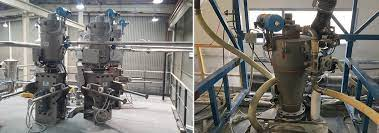Whether you’re transporting fine powdery substances, such as lime, paint pigments, granules, or small parts, or bulky materials several centimetres in size, vacuum conveyor systems are the best choice. They are used in plastic, metal and food production as well as many other industries and can transport a wide range of materials safely and reliably.
All vacuum conveying systems rely on the same principles: a vacuum-generating source that draws an air/material mix through a line to a destination. Depending on your needs and requirements, this source can be a vacuum-motor-equipped loader or portable vacuum conveying unit, a central vacuum pump, or an inline vacuum vacuum pump. Loaders and portable units generate a limited amount of vacuum while central pumps can produce two to five times that, or more, if needed. For a Vacuum conveying System, go to Aptech.
As the conveying lines and the vacuum generating sources are adjusted to meet your requirements, you must also consider the bulk density of the material. This factor dictates the size of a conveying line and vacuum receiver, affecting conveying velocity. Higher bulk density material requires larger receivers and lower transport velocity.
It’s also important to minimise the number of vertical vacuum conveying runs in a plant, as powders do not flow like liquids and each additional elbow increases the chance for powder buildup or blockages. To help prevent this, it is recommended to use a line-clearing valve at the end of each conveying line to ensure that the next section of the vacuum system is clear before it begins.





